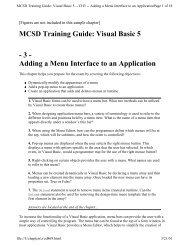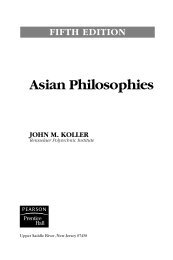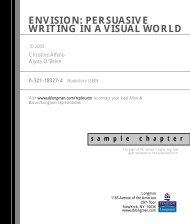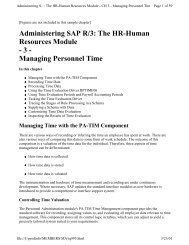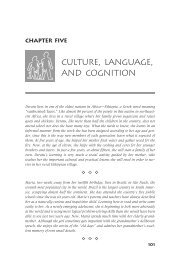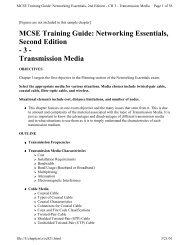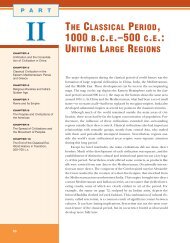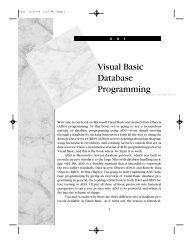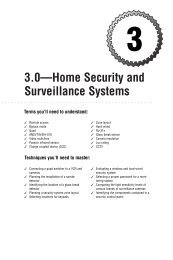Special Edition Using SAP R/3, Third Edition
Special Edition Using SAP R/3, Third Edition
Special Edition Using SAP R/3, Third Edition
You also want an ePaper? Increase the reach of your titles
YUMPU automatically turns print PDFs into web optimized ePapers that Google loves.
<strong>Special</strong> <strong>Edition</strong> <strong>Using</strong> <strong>SAP</strong> R/3, <strong>Third</strong> <strong>Edition</strong> - CH 3 - Exploring R/3 Architecture Page 10 of 26<br />
to whether the transfer is between applications or with a mainframe host.<br />
Synchronous CPI-C<br />
The transfer of the CPI-C commands and the management of transmission between applications or to<br />
a mainframe host takes place in a mutually dependent mode in a fixed-time relationship. This process<br />
is known as synchronous communication.<br />
If it is not possible to use synchronous communication, the alternative is asynchronous<br />
communication, which may be necessary in these types of situations:<br />
Starting a process on a target system has to be carried out manually--for example, because<br />
particular media have to be loaded manually.<br />
The target computer temporarily can’t accept or provide data.<br />
Asynchronous Q-API<br />
The R/3 system can maintain data in buffers that are queued and waiting for a suitable moment to be<br />
transferred to the receiving computer. This moment can be defined by a schedule or determined by<br />
the availability of the receiving computer. These queues can be freely integrated into any of the <strong>SAP</strong><br />
application programs. The mechanism of choice is Queue Application Programming Interface (Q-<br />
API).<br />
Two types of data format are supported under Q-API:<br />
The batch input format defined for accepting external data records into the R/3 system, which<br />
is directly recognized and entered into normal interactive transactions<br />
Data in a format that has been defined for the receiving program to suit the specific situation<br />
RFC and RPC Protocols<br />
The standard business functions of the R/3 system can be called and accessed freely without any<br />
special provision by the user apart from the normal business authorization procedures that may limit<br />
access of certain users to specific functions. However, your implementation may include some<br />
functions that were specially written in the ABAP/4 programming language to perform functions<br />
unique to your organization. The discussion in Chapter 29, "Developing ABAP/4 Programs with the<br />
R/3 Workbench," outlines the method of building these special-function modules.<br />
The Remote function call (RFC) is the <strong>SAP</strong> ABAP/4 programming language implementation of the<br />
remote procedure call (RPC) protocol, which is the standard adopted for accessing special-function<br />
modules.<br />
The following types of special functions can be accessed by using the RFC protocol:<br />
Functions residing in the R/3 system special-function library<br />
External programs called from within ABAP/4 applications<br />
file://J:\prodinfo\MEMBERS\MA\ir057.html 3/23/01




